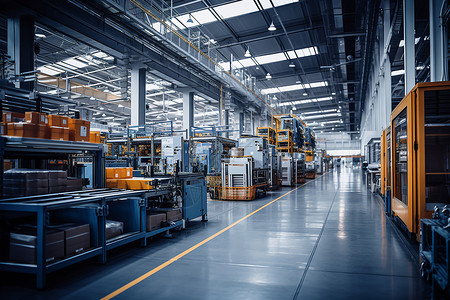Metal bar stools have become an essential element in modern interior design, widely used in kitchens, restaurants, bars, commercial spaces, and even industrial settings. Among the most important pieces of equipment used in metal bar stool production are the laser pipe cutting machine, pipe bending machine, and laser welding robot. These machines contribute to efficiency, consistency, precision, and cost-effectiveness—qualities essential for successful mass production.
1. Precision Material Preparation with Laser pipe Cutting Machines
Before any metal bar stool frame can take shape, manufacturers must start with perfectly cut metal tubing. This is where the laser pipe cutting machine becomes indispensable.
Key Functions of Laser pipe Cutting Machines
High-Accuracy Cutting
Laser pipe cutting machine can achieve extremely tight tolerances—even down to fractions of a millimeter—ensuring that every cut is smooth and consistent.
Versatility in Shapes and Features
Modern laser cutters can process a wide range of metal pipes, whether round, square, rectangular, or oval. They can also cut complex patterns, slots, bevels, screw holes, and joint features directly into the tubing. This eliminates the need for secondary machining and allows designers to create more sophisticated stool structures.
Improved Production Efficiency
Laser pipe cutting machines operate at high speeds and often include automated feeding, measurement, and cutting systems. This reduces manual labor and increases throughput, enabling manufacturers to produce large batches of stool components in short periods.
Material Optimization
With advanced nesting software, these laser pipe cutting machines can arrange cutting paths in the most efficient manner, minimizing scrap and lowering production costs.
Importance in Metal Bar Stool Production
In the context of making metal bar stools, the laser pipe cutting machine ensures that every leg, support bar, footrest, and connection piece is dimensionally perfect.
2. Forming Smooth and Consistent Shapes with pipe Bending Machines
Once the pipes are cut, the next step involves shaping them into the desired curves and angles. Bar stools often feature rounded legs, curved backrests, or elegantly shaped frames. Creating these shapes requires a pipe bending machine, an essential tool in modern metal furniture production.
Key Functions of pipe Bending Machines
Accurate Bending Without Deformation
A high-quality pipe bending machine applies precise, controlled force to bend tubing without flattening, wrinkling, or cracking the metal.
Programmable Multi-Angle Bending
Modern CNC pipe bending machines allow manufacturers to input bending degrees, radii, and sequences digitally. This ensures every stool frame is identical, improving consistency in mass production.
Capability to Handle Complex Geometries
Some bar stool designs incorporate multiple bends in different directions. CNC pipe bending machines can perform multi-axis bending, enabling the creation of intricate shapes without manual repositioning.
Role in the Manufacturing of Metal Bar Stools
The smooth curves and clean lines seen in many metal bar stools are the result of precision bending. Whether forming a circular footrest, a curved back support, or tapered legs, the pipe bending machine ensures uniformity in every piece.

3. Permanent and High-Strength Assembly with Laser Welding Robots
After cutting and bending, the individual metal components must be assembled into a complete stool frame. This stage requires strong, precise, and visually clean joints. While manual welding can achieve acceptable results, it often introduces variations in strength and appearance. To overcome these limitations, many manufacturers use laser welding robots.
Key Functions of Laser Welding Robots
Exceptional Welding Precision
Laser welding robot produces narrow, deep welds with minimal heat distortion. Robotic control ensures the weld path is exact, creating joints that are both structurally sound and visually clean.
Consistency and Repeatability
Manual welding inevitably varies from one piece to another, but laser weldng robots perform the same motion with perfect repeatability. This is crucial for producing uniform bar stools, where each welded joint must match.
High Speed and Productivity
Laser welding robots can weld faster than manual methods and can operate continuously with minimal downtime. This significantly increases production capacity.
Clean Appearance and Reduced Finishing Work
Laser welding robots leave minimal spatter and require far less grinding or polishing afterward. The result is a cleaner, more refined look—especially important for stools where the welds may remain visible.
Improved Safety
Welding involves intense heat, sparks, and fumes. Using laser welding robots reduces operator exposure to hazardous environments and improves workspace safety.
Importance in Metal Bar Stool Manufacturing
Because metal bar stools must support significant weight while maintaining a sleek appearance, welding quality is critical. Laser welding robots ensure each joint—whether on the seat frame, legs, or footrest—is consistently strong and visually appealing.
Conclusion: A High-Tech Approach to Everyday Furniture
The production of metal bar stools may seem straightforward at first glance, but achieving the perfect combination of durability, aesthetic appeal, and structural precision requires the integration of advanced manufacturing technologies.
Laser pipe cutting machines ensure perfect component dimensions and clean edges.
pipe bending machines create beautifully curved shapes while maintaining material integrity.
Laser welding robots assemble the pieces with unmatched strength and consistency.
Together, these machines form an efficient, automated production line capable of delivering high-quality metal bar stools for modern markets.

